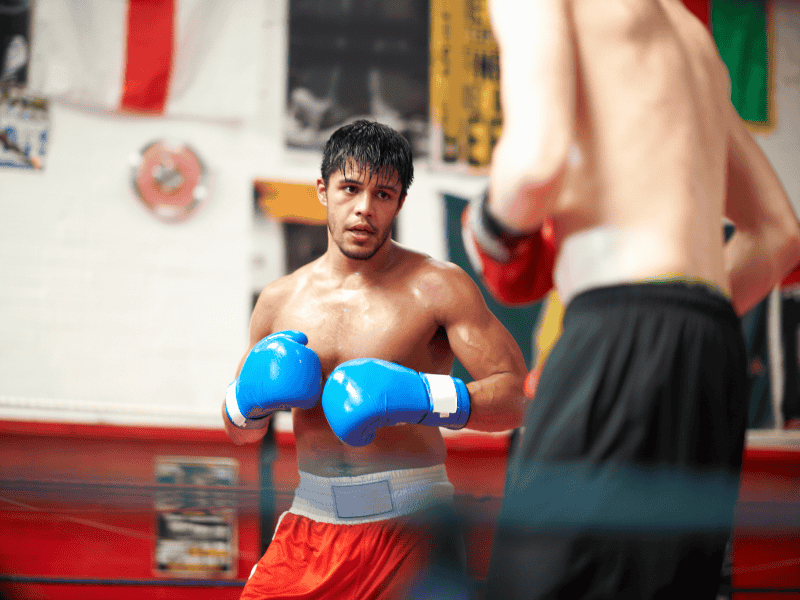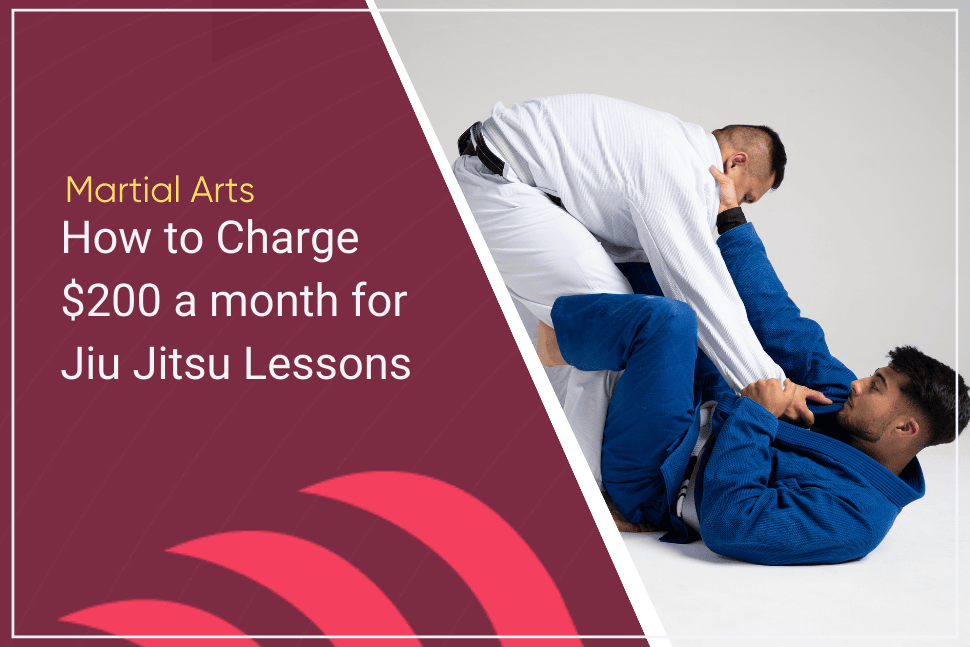How to Discover the Best Martial Art to Learn for Self Defense

Omar Marrero has a 14-inch blade and he wants to cut Javier Baez with it.
On Halloween night, after yelling in the parking lot, Marrero approached Baez's car and started hitting the driver’s side window with his blade. Then he opened the door and tried to stab Baez.
His car door was already unlocked, so Baez decided getting out of his car was safer. As he did, Marrero turned and charged toward him. Javier was immediately forced to fight for his life.
Take a look.

What would be the outcome if Baez didn’t have MMA and martial arts training?
Why You Need Martial Arts TrainingWithout martial arts, you’re impotent
French philosopher Blaise Pascal is often paraphrased as saying, "Law without force is impotent; force without law is tyranny.” This is the central problem for pacifists. You simply can’t set, maintain, and enforce boundaries without the ability to apply force behind them.
A lack of force means your No is merely a request.
There are various martial arts, but one approach produces consistent results above and beyond any single martial art.
This is a military strategy that relies on a variety of methods, tactics, tools, and training to defeat attackers over time and maximize safety. From a martial arts and combat training perspective, what does this look like?
- Marksmanship and combat skills, including move and shoots, getting shots on target, and close-quarter-battle (CQB) tactics.
- Defensive tools and weapons, including personal alarms, OC spray, knives, sticks, clubs, and improvised weapons.
- Striking via boxing, Muay Thai, Krav Maga, Sambo, etc., enables you to do damage with your limbs, disabling attackers with targeted strikes.
- Wrestling gives you takedown offense, defense, hand-fighting, and scrambling skills. Strong wrestlers are masters at scrambling out of bad positions and getting to their feet.
- Jiu Jitsu gives you supremacy over your opponents on the ground via control positions, joint locks, and strangles. With jiu jitsu, you can systematically break attackers down in seconds.
These five areas overlap and compensate for the weaknesses of the other.
From a training standpoint, these five areas ensure that you have the skills needed to address the majority of self defense problems you’ll encounter.
What’s the definition of self defense?
There’s really only one definition that matters: the legal one. According to Law.com, Self defense is
the use of reasonable force to protect oneself or members of the family from bodily harm from the attack of an aggressor, if the defender has reason to believe he/she/they is/are in danger. Self-defense is a common defense by a person accused of assault, battery or homicide.
Law.com
Reasonable force is the keyword here.
If you want to protect yourself or your loved ones, you’ll need the training and tactics to apply a proportional amount of force. Many insist they can simply shoot their way out of any self defense encounter—“If the only tool you have is a hammer, you tend to see every problem as a nail.”
A reasonable and proportional response is tough if you rely on a single martial art.
How to choose the right martial art for self defense
What’s the “right” martial art?
Is it the one that’s most effective? The system with the greatest stopping power? The right martial art depends on four specific factors.
- Combat effectiveness: Your martial art of choice must prioritize live sparring. You need to be able to test the techniques you’ve learned against active resistance. You should be able to see (a.) other people using your martial art in a competitive setting (e.g., BJJ via ADCC, MMA via UFC, Muay Thai via ONE, marksmanship and CQB in airsoft, paintball, and Simunition competitions), (b.) be able to apply the techniques yourself against strong resistance.
- Your physical profile refers to the totality of your physical experience, including injuries, performance history, skills, and body composition. If you’ve had a hip replacement, Muay Thai or taekwondo is probably not a great idea. If you've had significant brain trauma from college football, you’ll want to limit boxing to mitts, the heavy bag, and touch sparring. Built like an Icelandic powerlifter? Grappling, as a focus area, will maximize the results you’re able to achieve.
- The ideology you follow: It’s natural to lean towards one martial art or another. Our desires, beliefs, morals, values, and ethics mean our interests will be heavily slanted in one direction. Are you a brawler who loves to stand and bang? Striking arts like boxing or Muay Thai will form a good base for you. Are you a technician who’s looking for mastery? Boxing, wrestling, and Jiu Jitsu are great focus areas.
- Needs and life circumstances: Imagine that you’re a single mom of two on the run from a violent ex-husband. Your life circumstances require that you choose a self defense option with immediate efficiency, maximum results, and minimal lead time. If you’re a law enforcement officer, you’ll need a mix of options slanted toward immobilization or lethal force. If you’re partially or completely disabled, prioritizing marksmanship and using defensive tools (e.g., OC spray, edged weapons, tasers, etc.) will be a better fit. The best martial arts for self defense is the one that works with your limitations.
This sounds like common sense, right?
Thinking about these criteria makes it easier to choose the right martial art for self defense.
What are the top martial arts for self-defense?
There are more than 180 martial arts styles. Which ones are best for self-defense? To answer that question, we’ll need criteria to help us define the outcomes we’re looking for.
- The top martial arts are accessible. Bokator is a full-contact, ancient Cambodian battlefield martial art somewhat similar to Muay Thai. However, it’s not particularly helpful if you can’t find a credible school with an instructor willing to teach you. Martial arts need to be accessible if they are going to be useful.
- The best self defense training creates peril: There’s a significant or extreme risk of grievous bodily harm. According to Cornell Law, “grievous bodily harm’ means serious bodily injury. It includes fractured or dislocated bones, deep cuts, torn members of the body, serious damage to internal organs, and other severe bodily injuries. It does not include minor injuries such as a black eye or a bloody nose.”
- The top martial arts for self defense are consistently practical. The techniques are realistic and focused on outcomes and results, less on spiritualism or philosophy. The style retains its effectiveness under stressful, real-world conditions. For example, the jab in boxing works in training, competition, and self defense scenarios. It works regardless of the person, scenario, or context.
- The most effective martial art can adapt and change: The style or technique can be used to defeat bigger, stronger opponents or multiple attackers. The methods cover various aspects of conflict—striking, clinch work, takedowns, grappling, and defense against weapons.
- The best self defense martial arts are evidence-based. Their outcomes are consistent, repeatable, and testable. If you apply an outside heel hook (Brazilian Jiu Jitsu), the outcome is consistent: your opponent’s leg breaks. If you apply a spinning back elbow (Muay Thai), the response is the same: your opponent receives cuts to the face, concussions, and KOs. You perform a Sasae to De Ashi Harai (Judo), and your opponent falls in a repeatable fashion.
Based on these five criteria, here’s a list of the top martial arts for self defense.

Boxing: Hand-to-hand striking + footwork
Boxing first appeared as an Olympic event in ancient Greece, but according to Britannica, there were accounts of boxing in Thebes going back as far as 1,350 BC. Boxing is a striking art that’s focused on punches (and, in the case of kickboxing, elbows, knees, and kicks), defensive movements, and footwork.
Boxing is highly effective, with a proven track record in training, competition, and self defense contexts.
Brazilian Jiu Jitsu (BJJ): Submission Focused Grappling
BJJ was adapted from Japanese Jiu Jitsu and Kodokan Judo by the Gracie family in 1925. It is a full-contact martial art that emphasizes taking an opponent to the ground, ground fighting, pins, joint locks, and strangles. Principles like leverage, pressure, off-balancing, and weight distribution allow a smaller, weaker person to defeat bigger, stronger, and faster opponents.
BJJ shares some techniques with Judo, with BJJ prioritizing the ground game.
Judo:
Judo was created in 1882 by Kanō Jigorō. It emphasizes Randori (free sparring) instead of Kata (pre-arranged forms). Judo removed the striking and weapons training techniques present in its predecessors. Judo focuses on throws, pins, and submissions as a martial art. However, the major emphasis in modern Judo is placed squarely on takedowns.
This contrasts with BJJ, where the major emphasis is placed on groundwork, pins, and submissions.
Krav Maga:
Krav Maga is a self defense system developed for the Israeli Defense Force by Imi Lichtenfeld in the 1930s. As a martial art, Krav Maga prioritizes physical aggression above all else; the art relies on principles like simultaneous offense and defense, continuous attack, and pre-emptive/counterattacks as quickly as possible.
This martial art pulls technique liberally from Aikido, Boxing, Wrestling, Judo, and Karate to form its base. The art focuses on a stripped-down version of techniques that provide practitioners with a low-skill floor, enabling them to gain rapid functional competence relatively quickly.
Mixed Martial Arts (MMA):
MMA got its start in the UFC, with television critic Howard Rosenberg's first documented use of the phrase “mixed martial arts” in 1993. MMA combines boxing, kickboxing, Muay Thai, wrestling, Jiu-jitsu, Karate, and Judo.
It’s a sport that relies on mastery over at least one discipline. Most fighters specialize in one or two martial arts while functioning as generalists in other styles. For example, Charles Oliveira is a striking and BJJ specialist but is a skilled wrestling generalist.
MMA has become a dominant combat sport with various fight promotions competing for views.
Muay Thai:
The earliest known mention of Muay Thai dates back to 657 AD. Also known as the art of eight limbs, Muay Thai’s origins stem from the ancient battlefield tactics of the Siamese army, known as Muay Boran. Since then, this style has exploded in popularity as a martial art for sport and self-defense. The art uses striking, sweeping, and clinching techniques. As a striking art, Muay Thai relies on punches, elbows, knees, and kicks.
As a discipline, Muay Thai is a mix of history, culture, faith, and tradition.
Wrestling:
As a sport, wrestling is thousands of years old, with its earliest mention dating back to 2,100 BC in the Sumerian Epic of Gilgamesh. As a martial art, wrestling has more than a dozen sub-categories, including:
- Catch-as-catch-can
- Greco-Roman
- Folkstyle
- Luta Livre
- Shoot
- Sumo
- Turkish oil wrestling
Wrestling is almost universal; almost every region and culture has some unique form of wrestling. There are many other styles of wrestling spanning Africa, Europe, Asia, and the Americas. The primary focus of wrestling—takedowns, pins, holds, and joint locks—varies depending on the ruleset.
You can use the five-point criteria I mentioned earlier to evaluate these martial arts. Preferences and specialties are natural; just be clear about your focus and the goals you’re looking to achieve with your training.
What if you need more help?
If you’re looking for self-defense systems and programs to supplement your training, you can use the same criteria I mentioned above to evaluate the best system for you.
Let’s take a look at a few of your options.
Top self-defense systems and programs
All of these self defense systems lean towards (at least one) martial art; each system includes firearms and blade work. These programs also focus on the psychological details of self defense—de-escalation and awareness.
ShivWorks
ShivWorks is led by Craig Douglas, a former undercover narcotics officer. His self defense programs focus on situational awareness, verbal agility, and physical techniques. What makes ShivWorks unique is that its coursework is interdisciplinary across all areas of defensive training. You’re learning how to think, act, fight, and shoot in a variety of circumstances. You’re getting proven solutions that work in your day-to-day life.
Shivworks leans on a mix of martial arts, including—wrestling, jiu jitsu, striking, blade work, and firearms.
Fit to Fight Krav Maga
Ryan Hoover is the Chief Instructor at Fit to Fight. His take on Krav Maga is modern and free from an attachment to tradition or cult-like thinking. Fit to Fight’s approach is focused on four specific tenets.
- Avoid the fight, if possible.
- Be first if you have to fight.
- Learn to fight, so you can.
- Problem solve when you need to.
Their modern take on Krav Maga draws on all modern advancements in martial arts and combat sports. They draw on MMA, Muay Thai, firearms, blade work, and more.
Immediate Action Combatives
Cecil Burch is a lifelong martial artist. His offer is pretty simple: a real-world application of BJJ, wrestling, and boxing in a weapon-based environment (WBE). According to his website, “IAC methods are for everyone regardless of physical condition—young, old, male, female, athlete or not—You DO NOT have to be a professional fighter to perform at a functional level.”
ISR Matrix
Founded by Luis Gutierrez and Paul Sharp, “ISR Matrix is a teaching and training methodology focused on instructing civilians and law enforcement in defensive tactics and subject control. It emphasizes legal, physical, and psychological self-defense against potential threats and is structured around the use of force continuums.”
They create self defense programs for civilians, women, and law enforcement. They have a grappling-heavy background and supplement their program with additional martial arts and weapons training.
Integrative Defensive Strategies
Todd Fossey is the Chief Instructor at IDS; the team at IDS leans towards Krav Maga and firearms.
“Designed with the Citizen Defender in mind, our comprehensive system of self-defense is geared toward integrating the hand-to-hand and the firearm defense skills necessary to avoid or stop the threat at these distances and beyond through the use of intensive and innovative training practices. Please join us in ushering in a new paradigm in self-defense and firearms training.”
These self defense programs are comprehensive, but there’s one area most don’t cover comprehensively–legalities.
The legal considerations you’ll want to keep in mind
If you’re considering using your martial arts skills for self-defense, it’s a really good idea to pay attention to the legalities. I’m talking about the elephant in the room that most people seem to ignore.
The fact that self defense is an “affirmative defense.”
It’s a common defense for assault, battery, homicide, domestic violence, and violent crimes. If you’re claiming self defense, you’re admitting to a criminal act, but you’re stating that you have a good reason (legal justification) for doing it.
To be successful with your self defense claim, you’ll need to prove that your attacker had the following:
- Intent: Your attacker meant to harm you—acting purposely, knowingly, recklessly, and negligently.
- Means to commit the crime. This is about how your attacker committed the crime, the tools they used, the knowledge and skills they acquired, etc.
- Opportunity or access to you to commit the crime.
- Preclusion: You, the defender, hand no safe alternatives besides physical force. Could you have walked away? Could you have run away?
If you fail to satisfy the I.M.O.P principle and claim self-defense, you’ve admitted to a crime and implicitly stated that you’re guilty. That’s a problem because self-defense is all or nothing. If the prosecutor can prove that you were unreasonable with any part of I.M.O.P., your self-defense claim will fail. You’ll have admitted to a crime and implicitly stated that you’re guilty.
This is no good.
Keep this in mind for all situations of self defense.
Finding the best martial art for self-defense begins with you
“Law without force is impotent; force without law is tyranny.” Setting, maintaining, and enforcing your boundaries requires that you have the force needed to implement them.
Your No is a complete sentence.
The right martial art gives you the power to apply reasonable force to protect yourself and your loved ones from attackers. As we’ve seen, choosing the right martial art depends on the right factors—combat effectiveness, physical profile, ideology, needs, and life circumstances.
Choose carefully, and you’ll find your martial arts training fits with your self defense plan.
Gym management software that frees up your time and helps you grow.
Simplified billing, enrollment, student management, and marketing features that help you grow your gym or martial arts school.





